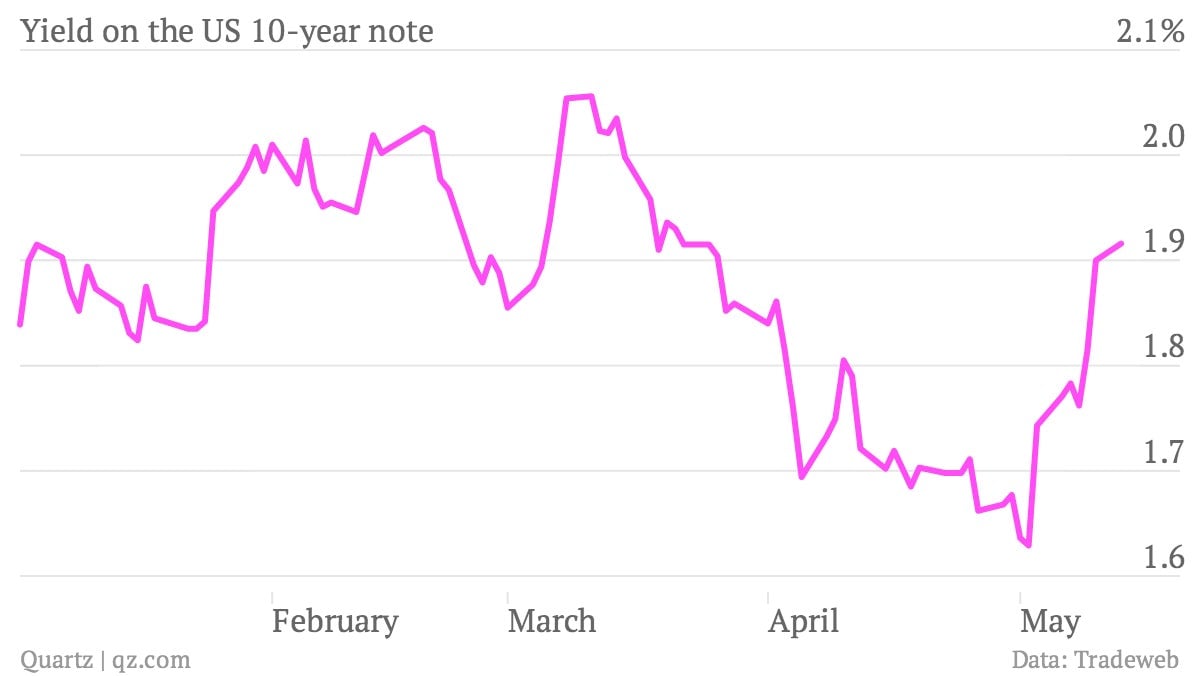Here’s what the Fed is trying to ever-so-gently tell financial markets
Here’s what the Fed wants markets to know: If and when it starts to change direction, interest rates won’t be on a one-way trip to the moon. That’s the takeaway from the Wall Street Journal’s Jon Hilsenrath, who reports on the plans the Fed is laying for bringing its current super-easy monetary policy to a close:


Here’s what the Fed wants markets to know: If and when it starts to change direction, interest rates won’t be on a one-way trip to the moon. That’s the takeaway from the Wall Street Journal’s Jon Hilsenrath, who reports on the plans the Fed is laying for bringing its current super-easy monetary policy to a close:
Officials are focusing on clarifying the strategy so markets don’t overreact about their next moves. For example, officials want to avoid creating expectations that their retreat will be a steady, uniform process like their approach from 2003 to 2006, when they raised short-term interest rates in a series of quarter-percentage-point increments over 17 straight policy meetings.
Why is the Fed so seemingly intent on making this point? Because it worries that if it does start to tighten monetary policy, in response to the improving US economy, traders will see that as a signal to run like crazy from the US bond market. (Tighter money means higher interest rates. And higher interest rates mean losses for investors that own bonds.)
Wall Street’s traders typically describe themselves as raging bulls or snarling bears. In reality they’re more like skittish gazelles, nibbling the sweet grass they’ve stumbled on and ready to run at the first snap of a twig. In a worst-case scenario, a change from the Fed sets off a stampede in the bond market, pushing interest rates higher and higher. Those rising interest rates may dissuade companies and consumers from borrowing, hurting economic growth and undoing everything the Fed has been trying to accomplish.
So the Fed wants to remind the financial markets that it is not locked into any long term change. If it sees that the economy is too weak to withstand a change in monetary policy—like, say, slowing down the $85 billion in new money it is creating each month—it can just as easily restart the program, pushing down interest rates again.
That might keep the gazelles from bolting. But it might not. The yield on the US 10-year note has been pushing steadily higher in recent weeks after bottoming out around 1.60% back in early May, just on the assumption that a policy change is probably around the corner. While that’s consistent with the recent improvement in US economic data, it could also be a sign of panic building in the trader herd. Fed officials will be watching closely for signs that a stampede is imminent.
